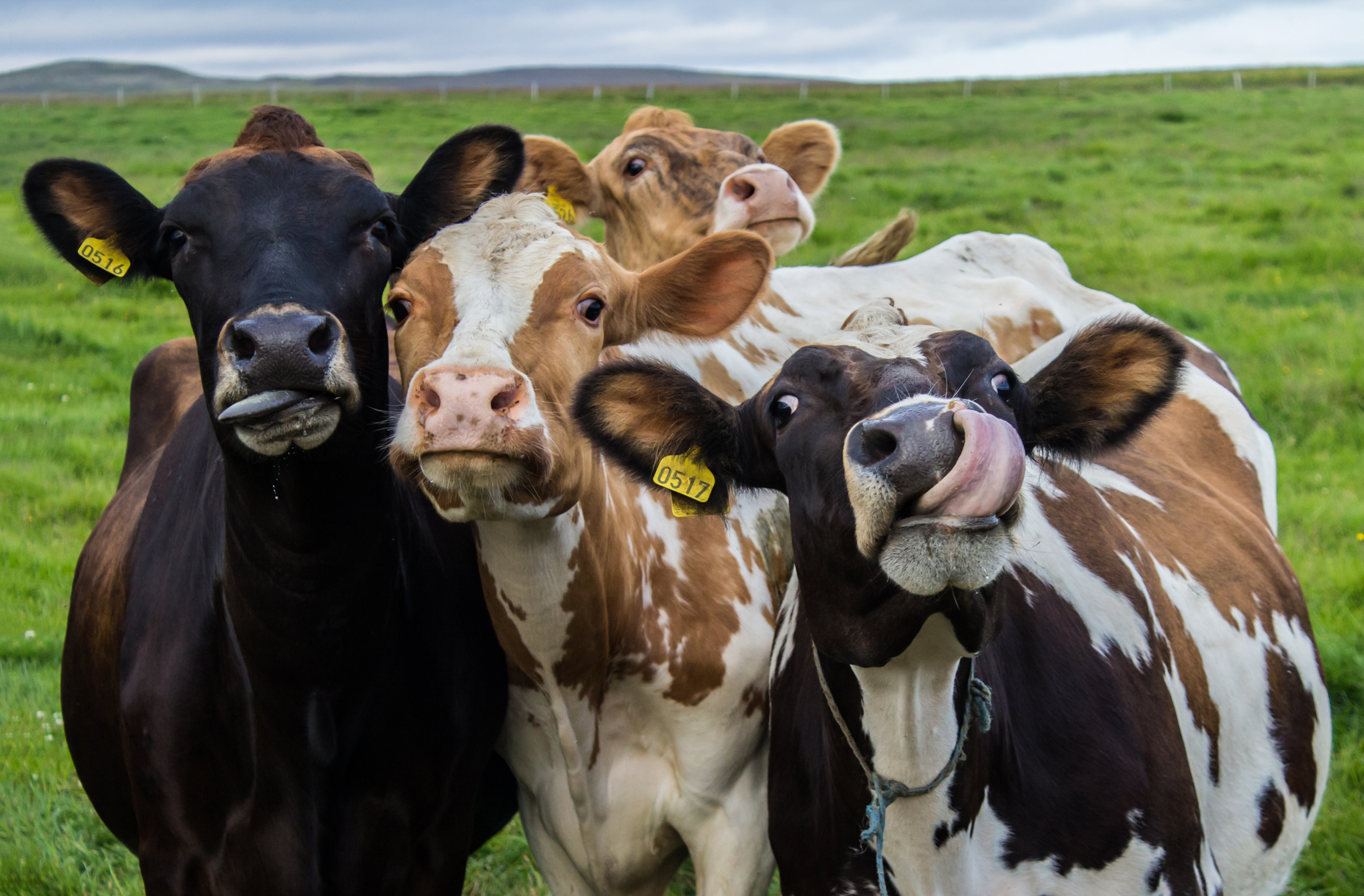
The threat of extinction is real, especially for the larger mammals out there. Roughly 13,000 years ago there were more species of mammals in North America than in modern-day Africa, according to Scientific American, but as soon as humans began to show up only the smaller species prevailed.
If the trend continues, scientists estimate that in as little as 200 years cows could be the largest land mammal on the planet. That’s a downsizing from the elephants, giraffes, hippos and rhinos of the current world, although species from those particular groups are all currently on the endangered list.
Cows, however, remain pretty safe thanks to our penchant for beef and dairy products. Given how intimate humans seem to be with the creatures you’d think we’d know everything there is to know about cows by now. But only the true experts will know all of these off-kilter facts.
They have great hearing

It’s not just dogs that can out-hear human beings; cows have pretty great listening skills too. They’re said to be able to pick up sounds from around 16 to 40,000 Hz, which means they could hypothetically hear African elephants rumbling from a distance and the ultrasonic screaming of a bat. Their hearing is so sensitive, in fact, that researchers advocate for a quiet environment so as to not completely stress these animals out on the farm.
They can’t see red
Picture a matador waving a red cloth and you’d probably be convinced the angry red colour is what sets the bull off and gets it to charge. Not so, say scientists. Bulls, cows and all other cattle are red colour-blind, and it’s the waving of the cloth itself that gets the animals going.
They don’t actually sleep standing up

It’s a common myth that cows sleep standing up. The animals (along with other four-legged land herbivores like moose and horses) can doze off while standing upright thanks to something called a “stay apparatus,” in which the tendons and ligaments in their limbs allow them to stand with very little muscular effort. But it’s impossible for them to get into a deep REM sleep unless they’re physically laying down, which means that when it comes to real sleep, these guys hit the hay. Er, grass.
They make it rain
Okay, so cows don’t actually make it rain, but they may be able to tell when it’s about to. It’s an old wives tale that cattle can predict the weather, but new science is now backing that up. Researchers say that cows lie down when they want to conserve heat and energy, but stand up when they’re hot. That doesn’t necessarily mean they’ll lay down when it’s going to rain (chances are they’re just chewing their cud), but it does mean they’re a lot better at telling the weather than we previously gave them credit for.
They totally form cliques

If you thought high school was bad, trying living the life of a cow. Like us, these animals pick besties and ignore those they’re not quite so fond of, forming groups of friends on the old farm. According to research these friendships aren’t just for social purposes either; cows that have a chance to form bonds are less stressed out and may even be smarter, too.
They have panoramic vision
It’s not just your mother who can see behind her. Because cows have eyes that are situated at the side of their heads, they’re able to see a range of more than 300 degrees (compared to our range of 180 degrees). When they have their heads down to graze that range increases to nearly 360, giving them a panoramic view of everything around them. Don’t feel too bad about your lack of vision though—while cows can see a larger area than humans, they don’t focus on items very quickly and have terrible depth perception. Shadows throw them off because they are easily mistaken for a dangerous hole or ditch.
A cow would probably win a spitting contest

Cows spend a heck of a lot of time chewing. Roughly eight hours of their day is dedicated to chewing cud, which they chew roughly 50 times per minute with their bottom teeth and molars (cows have no upper front teeth). That means they also need to produce a lot of saliva; a cow can produce between 40 and 150 litres of saliva every single day, which helps to break down acid in their feed and reduces the risk of bloat from foam in the rumen (the first of their four stomachs).
Cows can go upstairs but hate going down them
Notice we said that cows hate going down the stairs, not that they can’t go down a flight of stairs. It used to be a widely held belief that the way cows’ knees are structured that they couldn’t physically walk down steps, but as many YouTube videos out there prove, they actually can. It just depends on how steep the stairs in question are and how comfortable the cow is with them.
No black-and-white cow is ever the same

Holstein Friesian cows, which originally hail from The Netherlands, are known as those black-and-white cows that are particularly great at producing dairy. They’re also pretty unique in that their spots are like fingerprints or snowflakes: no two patterns are ever exactly alike.
They’re impossible to tip
You may have friends with wild claims to fame about running out to the fields to tip a sleeping cow, but odds are your friends are full of bulls—t. (See what we did there?) It’s physically impossible for a human (or six) to sway a 1,400-pound cow on to its side, whether that cow is asleep or not. Add some alcohol to the mix, however, and we’re sure people will continue to try again and again in the years to come.
